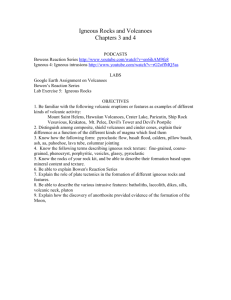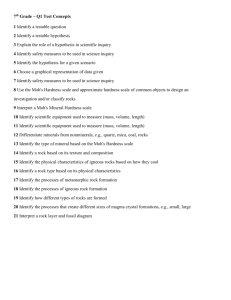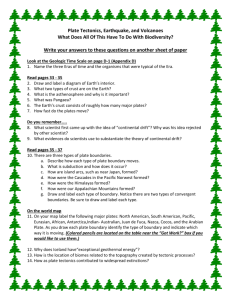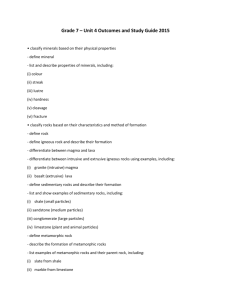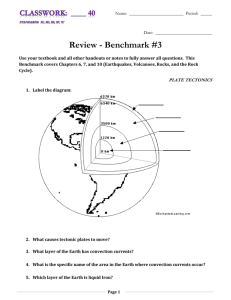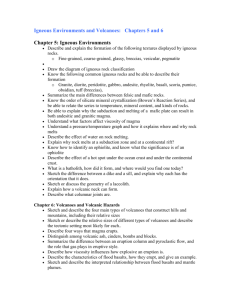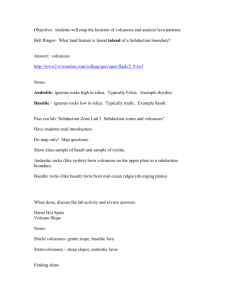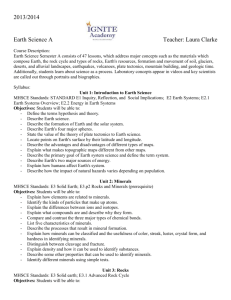Plate Tectonics Review Guide
advertisement
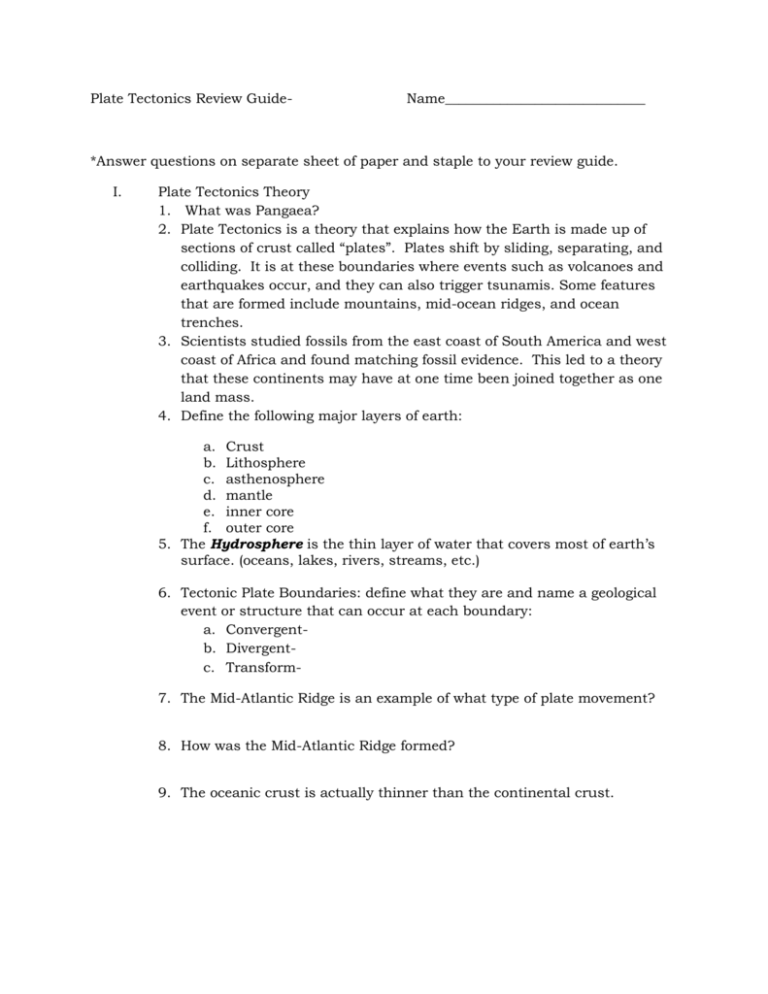
Plate Tectonics Review Guide- Name_____________________________ *Answer questions on separate sheet of paper and staple to your review guide. I. Plate Tectonics Theory 1. What was Pangaea? 2. Plate Tectonics is a theory that explains how the Earth is made up of sections of crust called “plates”. Plates shift by sliding, separating, and colliding. It is at these boundaries where events such as volcanoes and earthquakes occur, and they can also trigger tsunamis. Some features that are formed include mountains, mid-ocean ridges, and ocean trenches. 3. Scientists studied fossils from the east coast of South America and west coast of Africa and found matching fossil evidence. This led to a theory that these continents may have at one time been joined together as one land mass. 4. Define the following major layers of earth: a. Crust b. Lithosphere c. asthenosphere d. mantle e. inner core f. outer core 5. The Hydrosphere is the thin layer of water that covers most of earth’s surface. (oceans, lakes, rivers, streams, etc.) 6. Tectonic Plate Boundaries: define what they are and name a geological event or structure that can occur at each boundary: a. Convergentb. Divergentc. Transform7. The Mid-Atlantic Ridge is an example of what type of plate movement? 8. How was the Mid-Atlantic Ridge formed? 9. The oceanic crust is actually thinner than the continental crust. 10. The earth is like a magnet:As the mid-ocean ridge spreads, new rock formed from hardened lava on the seafloor rises up, as the old rock spreads toward the continental edges of North America and Europe and Africa. The newest rock is in the middle of the ocean and the older rock creeps toward the edges as a result of this seafloor spreading. These ocean movements also help account for magnetic shifts in the earth’s magnetosphere. The magnetic fields are thought to result from the movement of electrons from hot iron atoms in the convective flow of the core, which is more of a liquid than a solid. The movement of the charged particles through the planet creates a magnetic field just as the movement of an electric current through a wire does. Through convection, as the iron in the mantle flows slowly over time, the magnetic field shifts. This happens about every 200,000 years on average! It is in the process of a reversal now and is about 1,500 years away from another complete reversal! 11. What is subduction? What famous mountain range was formed by subduction? 12. Convection is the heating, rising, cooling, and sinking process that occurs in the earth’s mantle. As the core heats up, the plastic-like asthenosphere flows by this convection process. The continents, which sit on top of the asthenosphere, flow very slowly much like a raft on water. The continents “drift” several centimeters each year. 13. Rocks are classified according to their method of formation. The 3 classes of rocks are sedimentary, metamorphic, and igneous. Most rocks show characteristics that give clues to their formation conditions. 14. Sedimentary rocks are formed over many millions of years as layers of sediment are formed. It is in these layers that fossils are formed as organisms die and its solid remains are kept preserved in these layers. The deeper in the rock layer the fossil is found, the older it is. 15. Igneous rocks form from heat within the Earth, such as volcanic rocks. The most common igneous rocks are rhyolite, andesite, and basalt (most of the oceanic rock is basalt). Basalt is even found on the moon! 16. Metamorphic rocks form from heat and pressure. Quartzite, slate, and marble are common types. II. Earthquakes 1. Why does our planet experience earthquakes? 2. The 2 major types of earthquake waves are P and S waves. How are they different? 3. Studies of these earthquake waves have taught scientists a great deal about the interior of the earth. 4. What is a fault? 5. The famous San Andreas Fault is a result of crustal plate movement. 6. Where do most earthquakes occur? Can an earthquake happen anywhere? 7. What is a seismologist? What is a seismometer? 8. What is a focus? What is an epicenter? III. Volcanoes 1. Describe each of the 3 major types of volcanoes: a. Composite (Stratovolcano)b. Cinder Conec. Shield2. What is the “Ring of Fire”? 3. Where do most volcanoes occur? 4. In what ways to volcanoes erupt? 5. What causes volcanoes to erupt? (think of the major types of plate movements) 6. Not all volcanoes occur at plate boundaries. Some occur over “hot spots” in the ocean. What is a volcanic hot spot? 7. The Hawaiian Islands were formed from volcanic hot spots. Today the world’s most active volcano is there, Mt. Kilauea. 8. How can a volcano have an impact on global climate? 9. On April 10, 1815, for the first time in about 5000 years, Tambora erupted. A series of large explosions began, sending a massive volcanic column into the air. This eruption was the biggest eruption in recorded history. Infer why it was known as the “year without summer”. 10. What are 3 benefits of volcanoes? (how can they be good?) 11. Igneous Rocks are the result of volcanic activity. Basalt is an example of a common igneous rock which covers much of the ocean bottom. Pumice, obsidian, rhyolite, and andesite are some other common igneous rocks.
